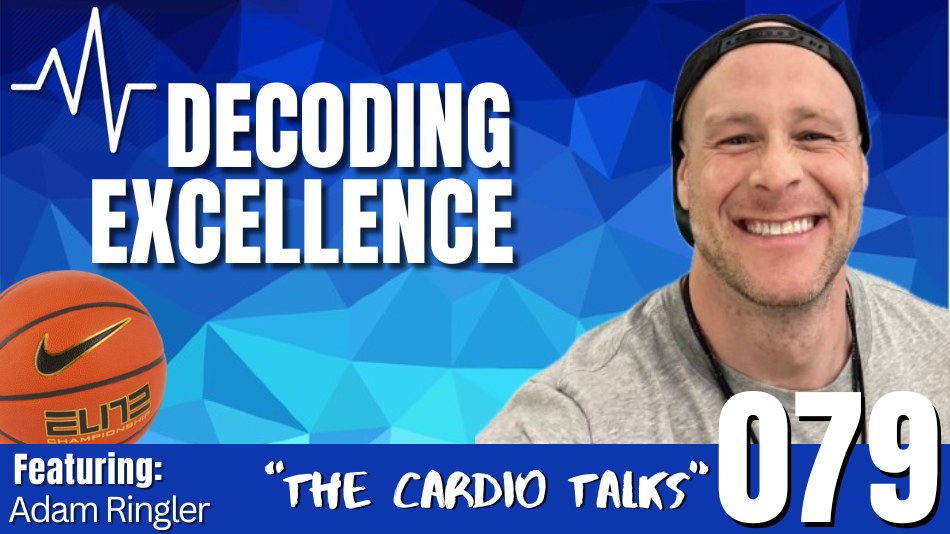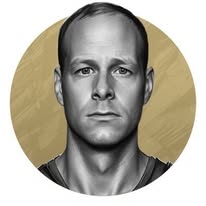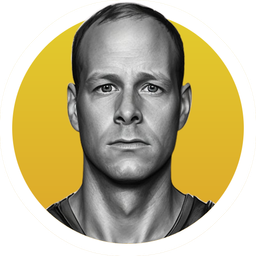#079 - The Blueprint, Preseason Training & Lessons from the Weight Room | Cardio Series
In this Cardio Series episode, I unveil The Blueprint—my free S&C and performance community—while sharing insights from a 75-min ruck walk on preseason basketball training, microdosing lifts, simplifying data, balancing team vs. individual needs, and leadership lessons.

In this “Cardio Series” edition of the Decoding Excellence Show, I’m bringing you along on a 75-minute ruck walk to share a critical update: introducing The Blueprint—our forever FREE community on Instagram and AdamRingler.com
I lead off with sharing The Blueprint, where I’ll be sharing strength & conditioning tactics, performance insights, sport science strategies, and behind-the-scenes access to health optimization and coaching at the highest levels.

Click HERE to Join our FREE Broadcast Channel over on Instagram! 📣
During this SUPER LONG (trust me, I was feeling every step of it) walk & talk, I also dive into some big topics shaping our field right now.

During the Cardio Talk
I comprehensively break down the following topics:
Designing Preseason Training for Women’s Basketball (Beyond Conditioning)
Preseason is a delicate balance—athletes are returning from summer break, practices are ramping up, and the temptation is to overload conditioning to “get them in shape.” But true preseason training goes beyond just running athletes into the ground. For women’s basketball, this phase should prioritize building durability in the joints, re-establishing movement quality, and gradually layering in power development. That means focusing on controlled strength work, mobility patterns, and foundational plyometrics that strengthen tissues before the demands of a long season hit.
At the same time, preseason is about managing practice loads. Athletes don’t need maximal weight room stress when they’re already ramping up high-intensity practices. Instead, programming should emphasize “minimum effective dose” strategies—loading athletes just enough to spark adaptation while keeping them fresh for on-court work. This way, the weight room complements practice rather than competing with it.
The Hidden Role of Microdosing Strength Work During the Season
One of the biggest mistakes coaches make is thinking in-season training has to be long, exhaustive, and traditional. The truth is, 15–20 minutes of targeted, well-structured lifts sprinkled into the schedule can be just as effective for maintaining strength as a full 60-minute session. This “microdosing” approach keeps athletes strong, powerful, and durable—without draining the energy reserves they need for practices and games.
Microdosing works because consistency beats intensity. By finding small pockets of time, coaches can maintain barbell exposure, reinforce key movement patterns, and keep athletes neurologically sharp. Instead of pulling athletes away from the court, micro sessions integrate into the natural rhythm of the season—ensuring performance stays high deep into the schedule.
Using Data Without Drowning in It
The explosion of sport science technology has given us more data than ever before—but more isn’t always better. The danger is collecting endless numbers without a clear plan for what they mean. Effective performance departments identify the 2–3 key metrics that truly influence decision-making and keep their focus there. The goal isn’t to be impressive on spreadsheets, it’s to be impactful in practice planning and athlete readiness.
Simplifying data means filtering out noise and finding the signals that align with coaching objectives. For example, monitoring jump height, player load, or recovery scores can help answer practical questions like: “Should we push today?” or “Do we need to pull back?” By focusing on actionable insights, coaches avoid analysis paralysis and use data as a tool—not a distraction.
Balancing Team Standards with Individualization
Every athlete needs a baseline of preparation, but not every athlete is the same. A freshman post player may need a completely different training emphasis than a senior guard. The art of strength and conditioning is setting team-wide standards while still individualizing where it matters. That might mean everyone follows the same broad training structure, but specific athletes get adjustments in volume, loading, or movement emphasis.
This balance ensures the team culture stays strong—everyone is working toward the same goals—while each athlete gets what they personally need to develop and stay healthy. Individualization doesn’t mean writing 15 completely separate programs. It means having a smart system that can fork in different directions depending on athlete history, injuries, or positional demands.
Business Lessons from the Weight Room
Running a strength program is more than just sets and reps—it’s about leadership, organization, and building culture. In many ways, the weight room is a microcosm of running a business. Coaches have to manage time, create systems, delegate responsibilities, and inspire people to buy into a shared vision. The best coaches aren’t just technicians, they’re entrepreneurs inside athletics.
Lessons like consistency, accountability, and feedback loops translate directly from the weight room to leadership in any field. When athletes see that structure and discipline create results, they learn principles that will carry into their careers long after sport. For coaches, it’s a reminder that our influence extends beyond the gym floor—we’re shaping not only performance, but also the way athletes think about leadership, systems, and success.
If you’re serious about training design, athlete monitoring, or building durable and explosive basketball players, this one’s loaded with practical takeaways you can apply immediately.
Thanks again for listening to the Decoding Excellence Show! I appreciate all the support growing this Sport Science, Strength & Conditioning, and High-Performance Coaching resource. If you have taken anything away from the show, please login to iTunes and navigate to Decoding Excellence page and leave us a FIVE STAR ⭐⭐⭐⭐⭐ review.
If you haven't already, you can head over to AdamRingler.com/Newsletter and sign-up for my weekly newsletter. This is a newsletter for the curious. It's chalked full of interesting articles I've read through the week, things I'm exploring and finding fascinating through my week, and a collections of thought experiences and resources I've cultivated.

If any of the material resonates with you, I'd love for you engage with me at @AdamRingler

Join the Former Athlete Society!
I built a private community exclusively for former college athletes who want expert coaching, a competitive environment, and the structure they’ve been missing. Inside, you'll get:
✅ A community discussion board to connect & share wins
✅ A full classroom with education modules on training & performance
✅ A leaderboard to reward engagement & consistency
✅ A calendar for live coaching calls & Q&A sessions
🔥Join the Former Athlete Society! 🔥I built a private community exclusively for former college athletes who want expert coaching, a competitive environment, and the structure they’ve been missing.


